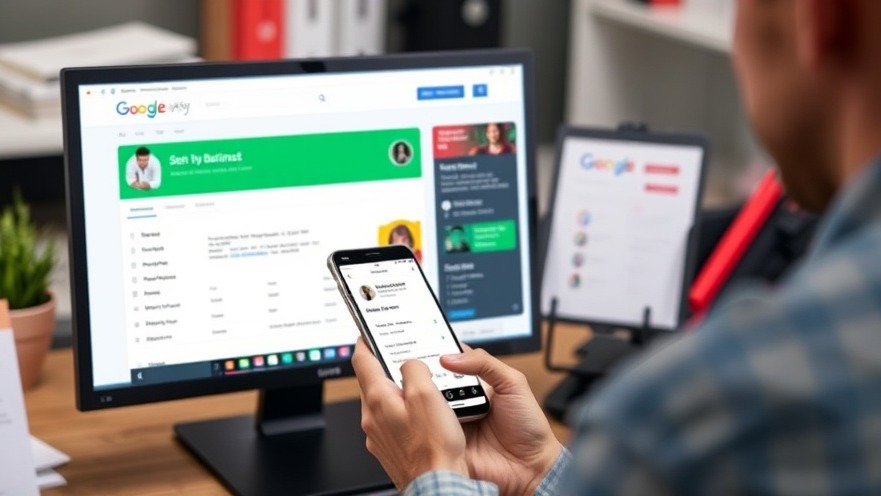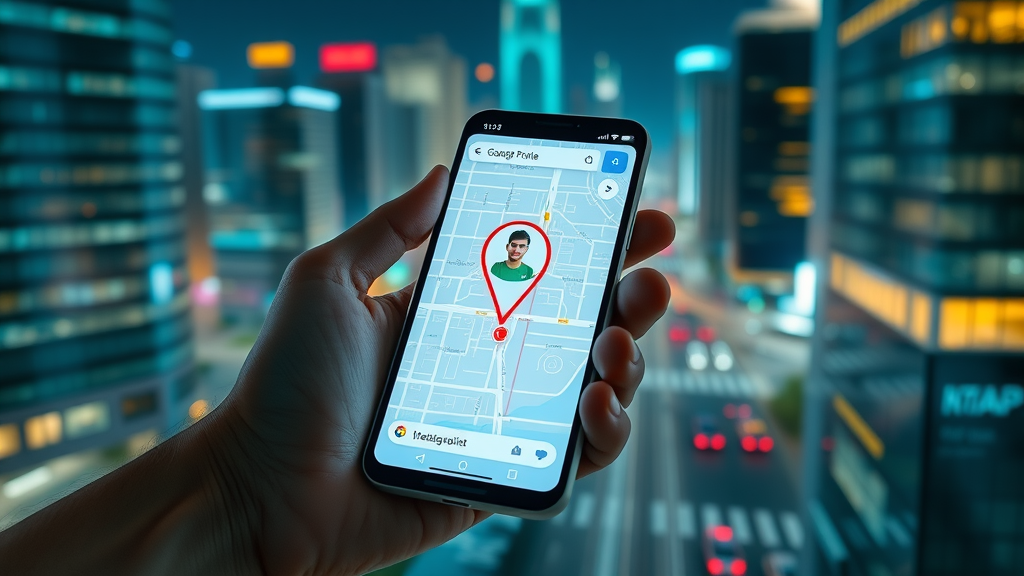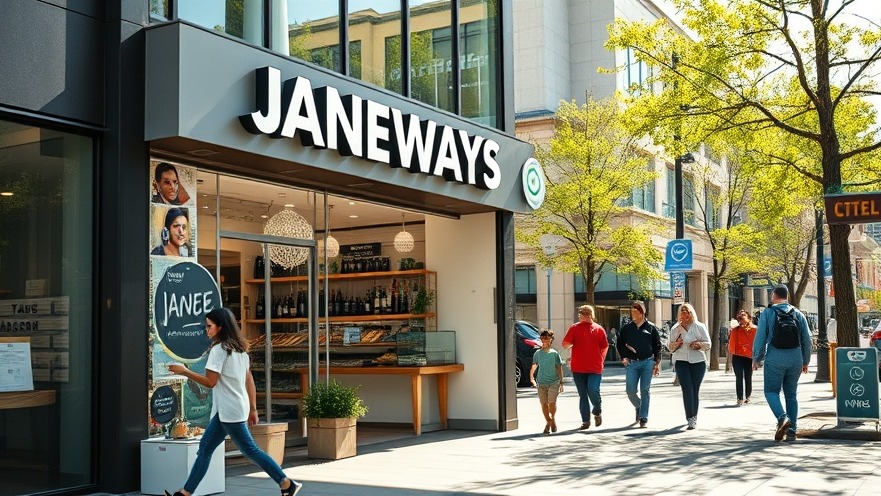
Unlocking Google My Business Optimization: Why Businesses Can’t Afford to Ignore Their Google Business Profile
Did you know over 80% of consumers use Google Maps to discover local businesses? This striking fact highlights just how critical it is to optimize your Google My Business profile for the modern digital marketplace. For small and medium businesses, appearing in local search results isn't just an advantage—it’s a necessity for winning over potential customers as they decide where to shop, eat, or seek services.
Effective Google My Business optimization goes far beyond basic business info. It’s the secret to boosting your local search ranking , driving more foot traffic, and gaining the kind of online trust that new customers crave. With Google Maps and Google Search acting as today’s digital storefronts, businesses that ignore this optimization are losing visibility, missing key opportunities for local SEO, and ultimately being passed over by their competition. Read on for essential, actionable strategies to transform your business profile into a growth engine.
Did you know that over 80% of consumers use Google Maps to find local businesses? Discover how effective Google My Business optimization can dramatically improve your visibility, bring in more foot traffic, and establish trust online.
What You'll Gain: Mastering Google My Business Optimization for Better Local Search Results
Complete understanding of optimizing your Google My Business profile
Factors that boost local search ranking
Proven ways to enhance your Google business profile with real examples
Tools and resources for ongoing Google business success

The Core of Google My Business Optimization: What is Google My Business Optimization?
Google My Business optimization refers to the process of making your business profile as helpful, relevant, and complete as possible in order to increase your chances of reaching potential customers via local search and appearing on Google Maps. This optimization entails more than just filling out the basics—it’s about utilizing every available tool and interactive feature to stand out from other business profiles .
You maximize your online presence by filling out essential details (such as business name, address, and phone number—NAP), selecting accurate categories, adding business hours, uploading images and videos, and regularly publishing Google Posts. The power of your Google business profile lies in how well you tailor your business listing for people searching in your area and for the search engine algorithm that powers Google Search and Maps.
An optimized Google business profile will be richly informative and engaging, helping your company not only appear in more results, but also converting casual browsers into loyal customers. In contrast, a basic listing simply puts your name on the map, often without the polish or prominence that drives real results.
Definition and scope of Google My Business optimization
How optimizing your Google business profile maximizes visibility
Understanding the difference between a basic Google business listing and an optimized Google business profile
How to Set Up and Verify Your Business Profile for Google Business Optimization
Step-by-Step Guide: Creating and Claiming Your Google My Business Profile
Getting started with Google My Business optimization starts with creating and claiming your business profile. First, sign in to your Google account , search your business on the Google My Business dashboard , and claim the profile if it exists—or create a new listing with your information. You’ll need to provide accurate business info: name, address, phone number, business hours, category, and website.
Verification is a crucial step in confirming your business real-world existence. Google offers a few different methods—commonly by postcard but also by phone, email, or instant verification if eligible. Be sure to check the verification code process carefully, as delays or common issues (like wrong addresses or previously claimed profiles) can occur. If you face issues, Google’s troubleshooting tips can get you back on the right track.
Once verified, you can begin optimizing your business listing for local search . Add compelling descriptions, choose the right categories, and start uploading high-quality images that represent your brand. Remember, the earlier you complete your setup and verify your business, the faster you can benefit from rapid Google My Business optimization and enhanced local search results .
Navigating the Google My Business dashboard
Verifying your business: Methods, common issues, and resolutions
Optimizing your initial business listing for local search success

Video: Walkthrough – Verifying and Launching Your Google Business Profile
Step-by-step walkthrough of setting up, verifying, and launching a Google Business Profile, including live screen capture of the dashboard, verification process, and profile customization.
Google Business Profile Optimization: The Basics You Can’t Miss
Perfecting Core Details: Business Name, Address, Phone Number, and Categories
One of the most vital building blocks of Google My Business optimization is ensuring that your NAP— name, address, and phone number— is 100% consistent everywhere. Local SEO experts emphasize that discrepancies, even minor, across your business listing on Google Maps, your website, and directories can harm your search ranking . Double-check your details, including suite numbers, abbreviations, and phone formats, for uniformity across all platforms.
Choosing the right categories is equally important. Start with the most precise primary category that matches your business or service and then add relevant secondary categories to capture more potential customers who search with varied terms. For example, a pizzeria could select "Pizza Restaurant" as a primary and "Italian Restaurant" as secondary. Google’s list is comprehensive—pick what fits, but don’t overdo it to avoid confusing the search engine.
Finally, ensure your business information, such as business hours and website links, are updated and accurate. This transparency increases trust and improves the odds that Google, as well as searchers, will view your business as reliable and authoritative. Set calendar reminders to update details for holidays or changes, so your business stays top-of-mind and top-of-results.
NAP Consistency: Why it matters for local search and local SEO
How to select the best primary and secondary Google business profile categories

Video: Data Consistency for Google My Business Optimization
Advanced Google My Business Optimization Strategies for Your Google Business Profile
Leveraging Business Descriptions for Local SEO
Your Google business profile description is an opportunity to naturally integrate local SEO keywords and highlight unique selling propositions. Focus on concise, keyword-rich sentences that answer the core intent of potential customers—who you are, what you offer, and why they should visit you. Avoid keyword stuffing; instead, weave primary services, location, and values into the narrative. For example: "Downtown’s favorite Italian bistro, offering authentic pasta and wood-fired pizzas in a family-friendly setting. Proudly serving the local community for over 10 years."
High-performing descriptions are also customer-centric . Address common search needs and ensure you cover what makes your business unique on Google Maps and Google Search. Remember: Your description displays on the results page and can be a deciding factor in whether a customer clicks or moves on to the next listing. Make it stand out and reflect your brand’s voice, values, and professionalism.
Tips for writing keyword-rich descriptions
Description examples that resonate with Google Maps users
Boosting Local Search Results with Products and Services
Showcasing your products and services on your Google business profile is essential for converting browsers into real leads. Add top-selling items, highlight new services, and use strong visuals—customers expect to see specific offerings and may filter their search based on what’s available. Organize these details in a structured way using Google’s built-in categories, which can increase the likelihood of engagement, especially if you’re in a competitive market on Google Maps.
Further, updating your profile with promotions, bundled deals, or specialty services helps you capture attention and signals to Google that your profile is active and relevant to local search . Be sure titles and descriptions are clear, compelling, and tailored for your audience—not just a copy of your website. This can have a natural, positive impact on your search results ranking and conversion rates.
Showcasing key products/services on your Google My Business profile
Organizing offers for maximum engagement and conversion

Using Google Posts in Your Google Business Profile
Google Posts are micro-updates that appear right within your business profile, offering a valuable content channel to engage potential customers. Use different Google Post types: regular updates, event announcements, special offers, and product spotlights. These posts show directly on your profile in both Google Search and Maps, helping drive immediate action—like booking a service, grabbing a coupon, or learning about new menu items.
To maximize their effectiveness, schedule Google Posts regularly—at least once a week. Fresh content signals to Google that your business is active and gives returning customers a reason to check back. Leverage seasonal campaigns and social media synergy to keep your content calendar aligned for consistent Google business profile engagement.
Types of Google Posts and their benefits
How to schedule posts for continuous Google business engagement
Video: Scheduling Google Posts for Everyday Google My Business Optimization
Enhancing Your Google My Business Profile with Photos and Video
The Impact of Visuals on a Google My Business Profile
Visuals are a magnet for attention in a Google business profile —and they have a direct effect on local search behavior. According to Google, “Businesses with photos receive 42% more requests for driving directions on Google Maps and 35% more click-throughs to their websites.” That means more images and videos equal more engagement and ultimately more potential customers at your door.
For maximum impact, upload high-quality images (JPG or PNG, 720x720px or larger) that showcase your business’s unique atmosphere, products, and team. Video (less than 30 seconds, under 100 MB) can give an authentic peek into your business life. Google Maps and Search display these visuals prominently, making them a vital factor in rotation for local SEO success.
Best practices for images (format, sizes, and types)
Video guidelines for business profiles on Google Maps and Google Search
"Businesses with photos receive 42% more requests for driving directions on Google Maps and 35% more click-throughs to their websites." – Google

User-Generated Content: Encouraging Customer Photos and Video
User-generated photos and videos (UGC) can serve as powerful social proof for your Google business profile . Encourage satisfied customers to share their experiences by offering subtle prompts, like table cards (“Share your visit on Google!”), or rewarding participants with a discount. UGC not only supports local SEO , but it also builds credibility: authentic content reassures prospects that your business is thriving and trustworthy.
UGC also feeds the Google Search and Maps algorithms, giving your business profile a freshness boost that few competitors can match. The more engaging, recent, and relevant pictures available, the better your business listing will stand out on the search engine results page.
Strategies to prompt customers to share experiences
How visuals support local SEO and Google business credibility

Video: Visual Content Enhancement on Google My Business
Collecting and Managing Reviews for Maximum Google My Business Optimization
Why Google Reviews Matter for Every Google Business Profile
Google reviews are far more than social proof—they’re a crucial ranking factor in local search and a key trust signal for your business profile. Profiles with high numbers of positive reviews routinely outperform competitors on the results page , as Google’s algorithm values relevance, recency, and frequency of review activity. Encourage happy customers to leave honest, detailed feedback; it can boost both click-through rates and drive new business.
Don’t ignore bad reviews—actively responding to negative reviews shows you’re engaged, willing to improve, and customer-focused. Address concerns professionally, offer solutions, and thank all reviewers, good or bad. Every response is a chance to showcase your commitment to service and build future customer confidence.
Proof of trustworthiness and impact on local search ranking
How to encourage, respond to, and leverage positive and negative reviews

Video: Responding to Reviews and Boosting Your Online Reputation
Business Profiles on Google Maps: Leveraging Map Features for Local SEO
Business Listings and Google Maps Integration
Your business profile on Google Maps acts as a digital storefront for people searching in your area. Profiles are displayed based on the searcher’s location and query relevance—meaning your details, photos, and reviews help influence who sees you and when. An optimized profile often receives higher placement on Google Map “3-pack” listings, leading to a surge in visibility and queries.
Make use of map pins and location attributes, such as wheelchair accessibility or outdoor seating, to distinguish your business listing. Geo-focused content—like posts about neighborhood events or city-based keywords—further strengthens your local SEO potential. Location extensions in ads can tie directly to your Google business profile, giving you more control over how and where your listings appear on maps and search results .
How business profiles are displayed on Google Maps
Maximizing the power of map pins, attributes, and geo-focused content
Location extensions and their influence on Google business profile visibility

Tracking and Measuring Google My Business Optimization Performance
Setting Up Google My Business Insights and Data Tracking
Google My Business Insights offer indispensable analytics—learn how potential customers find your business, what actions they take (like calls and bookings), and which photo or post content receives the most engagement. Use these insights to fine-tune your optimization: adjust business information, update posts, and invest in sections that prove most effective.
Review your profile’s performance weekly using Google Insights as well as third-party platforms such as Google Analytics . These data sets let you pivot quickly, respond to trends, and ensure your local SEO strategy is always evidence-based and results-driven. Ongoing tracking is the backbone of successful Google My Business optimization .
Interpreting visitor analytics, calls, and bookings
Adjusting your optimization strategy based on real data

Comparing Google My Business Optimization Plans: Costs, Features, and Value
Table: Free vs. Paid Google My Business Optimization Solutions
Plan Type |
Cost |
Features Included |
|---|---|---|
Free |
$0 |
Basic profile, map listing, reviews, posts, insights |
DIY |
Time investment |
Manual optimization, posts, review management |
Agency |
$200–$500/mo |
Managed optimization, custom SEO, report tracking |
Tools |
$25–$150/mo |
Automated profile checks, post scheduling, analytics support |
Cost comparison of approaches: DIY, hiring an agency, using optimization tools
People Also Ask: What is Google My Business Optimization?
Google My Business optimization is the process of enhancing your business profile on Google so it ranks higher in relevant local search results. It includes updating information, posting content, managing reviews, and leveraging all interactive features Google offers to present your business favorably to potential local customers.
People Also Ask: What is the cost of Google My Business optimization?
The base tool is free, but effective Google My Business optimization can have costs—either in time or via hiring a professional. DIY costs your time, while professional agencies typically charge between $200–$500 monthly. Automated SaaS tools offer middle-ground solutions ranging from $25–$150 per month.
People Also Ask: How do I SEO Google My Business?
Focus on consistently updating your Google My Business profile, responding to reviews, adding photos, completing your business listing, using keywords in your descriptions, and posting regularly. Monitor Google Insights to refine and drive ongoing improvements.
People Also Ask: Is Google Business Profile being discontinued?
Google has renamed Google My Business to Google Business Profile. The new interface focuses on direct edits within Google Search and Google Maps to simplify management, but business profiles and their optimization are more relevant than ever for local search marketing.
Expert Tips: Lesser-Known Google My Business Optimization Hacks
Add UTM parameters to your website URL for tracking conversions
Use appointment links for services with bookings
Enable messaging to increase customer engagement
Highlight attributes (like wheelchair access, outdoor seating) in your business listing
Optimize holiday hours for search accuracy
Most Common Google My Business Optimization Mistakes—and How to Fix Them
Incomplete business profile details
Ignoring customer reviews
Inconsistent NAP information across the web
Neglecting new Google features like attributes and Q&A
Not updating photos or posting content regularly
Checklist: Optimize Your Google My Business Profile in 12 Steps
Claim and verify your business listing
Ensure business name, address, phone number are 100% correct
Select the most accurate categories
Write a compelling, keyword-rich business description
Add high-quality images and video regularly
Publish fresh Google Posts at least weekly
Ask for and manage customer reviews
Add products/services listings with clear descriptions
Check business hours and update for holidays
Enable messaging for fast customer communication
Link appointment or reservation URLs
Monitor Google Insights and make data-driven improvements
Quote: The Impact of Google Business Profile Optimization
"Optimizing your Google Business Profile is no longer optional—it’s essential for local business success. Investing the time and resources into Google My Business optimization delivers measurable results." – Local SEO Specialist
Frequently Asked Questions About Google My Business Optimization
What is the difference between Google My Business and Google Business Profile? Google Business Profile is the new name and interface for Google My Business, focusing on seamless in-search and in-maps edits, but maintains all optimization features and tools vital for local SEO and visibility.
How often should you update your business listing? Update your profile regularly—at least monthly—or whenever you change business hours, add new products and services, or want to share fresh content. Responsive updates help maintain accuracy and boost engagement.
What kind of content performs best on Google Posts? Promotions, time-limited offers, events, behind-the-scenes content, and customer testimonials tend to generate the most engagement on Google Posts. Showcase unique aspects of your business to keep posts relevant and appealing.
Can businesses have multiple profiles for multiple locations? Yes, organizations with separate physical addresses can have dedicated Google business profiles for each location, helping you control and optimize your visibility in each local area served.
Is Google My Business optimization worth paying an agency? Agencies provide strategic management, advanced tools, and expertise to maximize results. If time or expertise is limited, hiring professionals can significantly improve your local search presence and ROI.

Next Steps: Take Action with Google My Business Optimization
Use the checklist above to boost your business profile’s performance
Stay proactive—regular updates and review management are key
Ready to see real growth from your Google business profile? Call us today! 908 520-0095
Conclusion
Take charge of your Google My Business optimization, keep your profile dynamic, collect reviews, and use every tool to attract and engage local customers . Start optimizing today for lasting visibility and real-world growth!
Sources
Google Business Profile Help – https://support.google.com/business/
Moz – Google My Business Optimization – https://moz.com/learn/seo/google-my-business
Search Engine Land – https://searchengineland.com/ultimate-guide-to-google-my-business-312751
LocalU – Guide to Google My Business – https://localu.org/blog/google-my-business/
To further enhance your understanding of Google My Business optimization, consider exploring the following resources:
“Optimizing Google My Business: Complete Guide” ( spiralytics.com )
“Google My Business Optimization Guide for SEO” ( ondyr.com )
These guides offer comprehensive strategies and insights to help you maximize your business’s visibility and engagement through effective Google My Business optimization.
 Add Row
Add Row  Add
Add 




Write A Comment